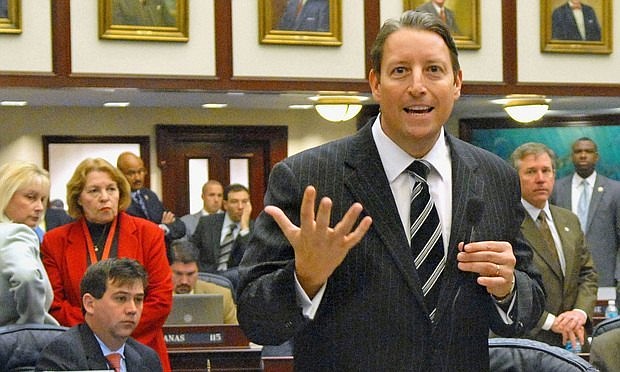- November 22, 2024
-
-
Loading

Loading

In May 2019, Florida Gov. Ron DeSantis signed into law the Multi-use Corridors of Regional Economic Significance program.
M-CORES and other transportation programs are expected to be funded by about $135 million a year starting in fiscal year 2022-23, using portions of motor vehicle license taxes. The bill also set into motion activities within the Department of Transportation, including establishing task forces to study three potential road corridors. One of those is the Southwest-Central Florida Connector, extending from Collier to Polk counties. The task forces are charged with delivering a final report by Oct. 1.
The Southwest-Central Florida Connector could have major impacts on the region — if built. Some in Florida, such as Florida Sen. President Bill Galvano, R-Bradenton, point to several positive effects the tolled roadway could have, from encouraging business growth to improving hurricane evacuations. On the flip side, there have also been strong voices in opposition, who cite potential environmental issues and how the road could change the character of more rural areas.
‘We have, in this state, for years planned in reverse and played catch up where the need has exceeded the infrastructure we have.’ — Bill Galvano, Florida Senate
Galvano, who has championed the bill, points to Florida’s growth and the number of people moving to the state as a big reason for the connector. “We have, in this state, for years planned in reverse and played catch up where the need has exceeded the infrastructure we have,” he says.
The M-CORES program, he says, is a way to prepare for the future, relieve the increase in density around the perimeter of the state and provide opportunities to interior communities. He also points out the program is a multiuse corridor that goes beyond roads to include water and sewer infrastructure and broadband access.
Galvano thinks the connector will be good for business too. “For one thing, you’re connecting rural communities that have economic potential with the more densely populated communities that have enjoyed some prosperity,” he says.
The economic benefits could extend beyond the immediate path of the Southwest-Central Florida Connector, according to Galvano. “It really creates an artery in which to feed other areas,” he says. “It’s not that this is a hypothetical — we’ve seen that work time and time again.” As an example, he points to Interstate 4 and economic opportunities it created for the Orlando area and Polk County.
Specific lines for the proposed roads haven’t been determined yet, just larger areas they could run through. “The areas that have been chosen provide a lot of flexibility,” Galvano says. The Legislature, he says, didn’t draw paths on a map but identified corridors in need and created task forces to look further at planning.
In Galvano's mind, the connector is considerably necessary, and obvious. “One of the core roles of government is to make sure we have the adequate infrastructure to provide opportunity for our Floridians," he says, "and that’s what’s at the heart of this."
Naples-based attorney Andrew Dickman, a member of the Southwest-Central Florida Connector task force as a representative of 1000 Friends of Florida, sees the connector through a different light. He says the process has been frustrating because of a lack of information that points to a need for the roadway. “It’s a little difficult because there’s not much empirical data behind what we’re supposed to do,” he says. “No one has really come out and said we’re trying to avoid passenger log jams or freight log jams…”
Dickman says instead, officials have used other goals, such as hurricane evacuation, economic development and technology deployment as reasons for the road. The project, he says, is based on potential indirect benefits rather than a data-driven determination the transportation infrastructure isn’t adequate.
Dickman, who grew up in a small town in Florida, is also concerned the connector could cause the area to lose some of its unique character. “It’s a little bittersweet for me because I lived through the process of the extension of I-75,” he says. “Everybody used to take Tamiami Trail. Now the landscape is so different.”
As a member of the task force, Dickman’s strategy is to use his skills as former urban planner and current lawyer to ask those involved, from transportation planners to engineers, key questions about passenger data, freight data, unemployment, the need for economic development and more. “Eventually, I think things will become clearer to everybody,” he says. “I’m trying to be as professional and polite as possible but ask very direct questions.”
One question on Dickman’s mind: “Are there any plans to connect various nodes of transportation, from shipping to air?” He doesn’t know if anyone is thinking outside the norm in terms of future transportation, considering the potential for disruptive technology. “I don’t know that roads are always the best answer,” Dickman says.
Despite his connector questions, Dickman knows there is one clear truth: “It’s an exercise that’s launching a massive build that’s going to be an incredible infrastructure capital improvement that’s going to change the landscape of Florida forever,” Dickman says. “That’s what’s at stake here.”